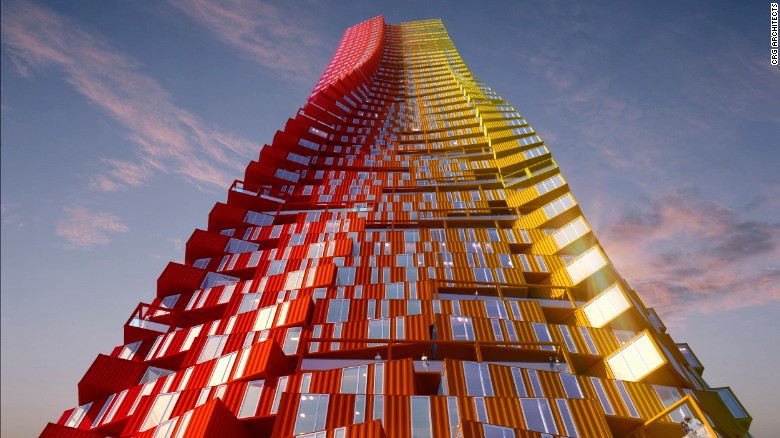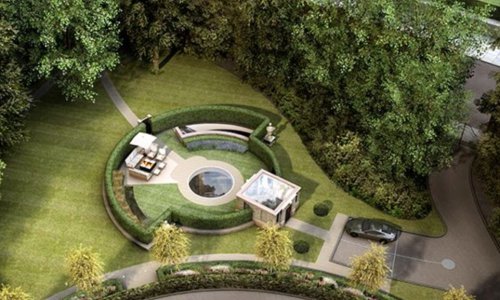They've already been used to house the homeless, shelter refugees and build spectacular family homes at a knockdown price.
Now steel shipping containers could be used to construct one of India's tallest towers -- should the vision of one ambitious architecture firm come to fruition.
The 'Containerscraper' from CRG Architects is a radical housing solution proposed for the Dharavi slum in Mumbai -- the bustling inner-city area where parts of the Oscar-winning movie "Slumdog Millionaire" were filmed.
The project, which recently received third prize in an ideas competition that focused on providing temporary homes in Mumbai, would see almost 2,400 containers stacked up to form two, twisting towers.
The larger tower would stand 400 meters tall with 139 floors - dominating the city skyline - while the smaller structure would top out at 200 meters. Together they could house over 5,000 people.
The magic box
Early plans show containers colored from red to blue to regulate Mumbai's fierce heat, and separated to allow ventilation. They are arranged in a circle around a hollow interior to allow 360 degree views, with the central space used for an elevator.
"Our greatest concern was high temperatures. In Mumbai many people have died from the heat," says Carlos Gomez, Principal of CRG Architects. "The containers need to be adapted for human life with insulation, and they must allow air to flow through to keep the temperature down."
Residential units can be subdivided for single occupants or merged for larger families. Non-residential containers would be allocated for water tanks and public spaces such as gardens.
Another priority for CRG was to maintain the vibrant social and commercial life that characterizes Dharavi.
"The public spaces allow community activities, which is how life develops in slums," says Gomez. "They don't just live there, they also work there, and we tried to give space for that."
The architect sees the use of containers as a natural reaction to the growing trend toward urbanization, citing forecasts that 60% of the global population will live in cities by 2030.
Container housing is relatively cheap, quick to build with, and readily available in port cities such as Mumbai, says Gomez.. He adds that building vertically would provide Dharavi residents with better air quality than at ground level of the slum.
Container critics
The use of containers has become increasingly popular in recent years, whether for low-cost, no-frills housing or high concept variations at the luxury end of the market. But the trend has also come in for criticism.
"Proposals that show structurally ambitious high rises built out of containers...neglect the most important facet of residential design: human comfort," says Mark Hogan, an architect and lecturer at California College of the Arts.
Hogan points to the lack of space offered by containers, and the high cost and technical difficulty of establishing a liveable climate within.
"They also spin a false narrative by proposing this as an economical solution," Hogan says. "In reality a container high rise would cost the same or more than established methods of construction while delivering a horribly inferior product."
As such, the Dharavi design is unlikely to get off the ground in the near future.
Yet with new housing urgently needed for overcrowded cities across the world, the container concept is already ticking boxes as a viable urban solution.
(CNN)





www.ann.az
Follow us !











